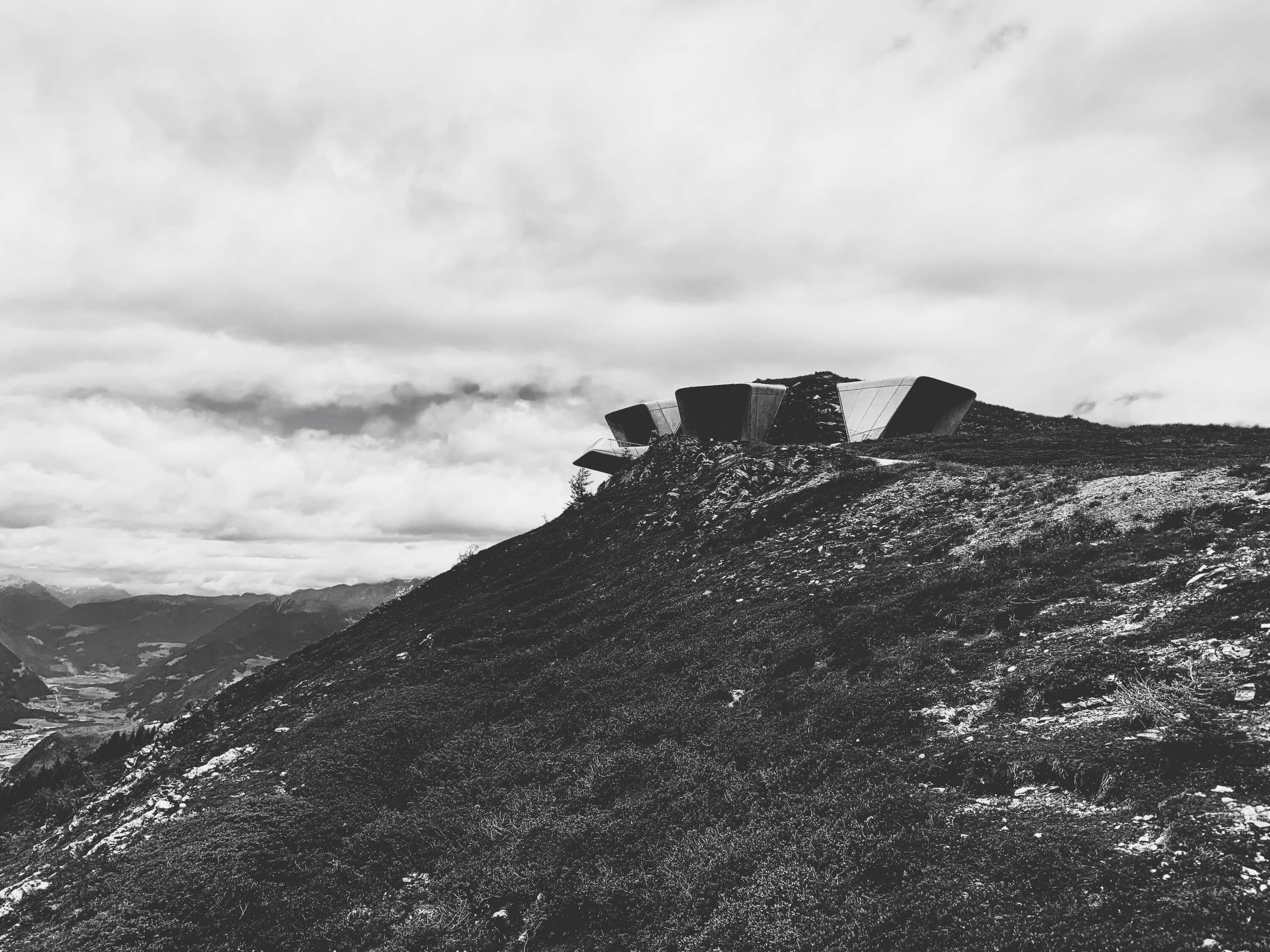The Messner Mountain Museum Corones is one of six museums carrying the name of Reinhold Messner - the first person to summit all 14 mountains over 8000 meters and the first solo climber of Everest. Additionally, he holds the distinction of being the first person to summit Mount Everest without the use of supplemental oxygen.
The Corones Museum is dedicated to mountain climbing and exploration and is fittingly situated on the summit plateau of Kronplatz at 2275 metres in altitude. As well as showcasing the story of mountaineering, it also offers unique views of the great mountain walls of the Dolomites and the Alps. The distinctive building was designed by the celebrated architect Zaha Hadid.
A long ride up the ski lift from the town of Bruneck takes you to Kronplatz, where you follow a path to the museum that enjoys a view of the futuristic building overhanging the mountainside. The building by Zaha Hadid is worth the visit on its own - from either side is a different view of the embedded concrete structure. Once inside, a selection of items from books to ice axes to photos tell the story of traditional mountaineering from Messner's perspective.
The museum is small and some items are in difficult positions to view - a new curation would help tell the story and simplify the timeline for those new to mountaineering. The inside of the museum is less impressive than the outside, but this takes little away from the collection Messner has amassed. In addition to its impressive collection, the structure designed by Hadid flawlessly frames the surrounding mountains outside.
The idea is that visitors can descend within the mountain to explore its caverns and grottos, before emerging through the mountain wall on the other side, out onto the terrace overhanging the valley far below with spectacular, panoramic views.Zaha Hadid

